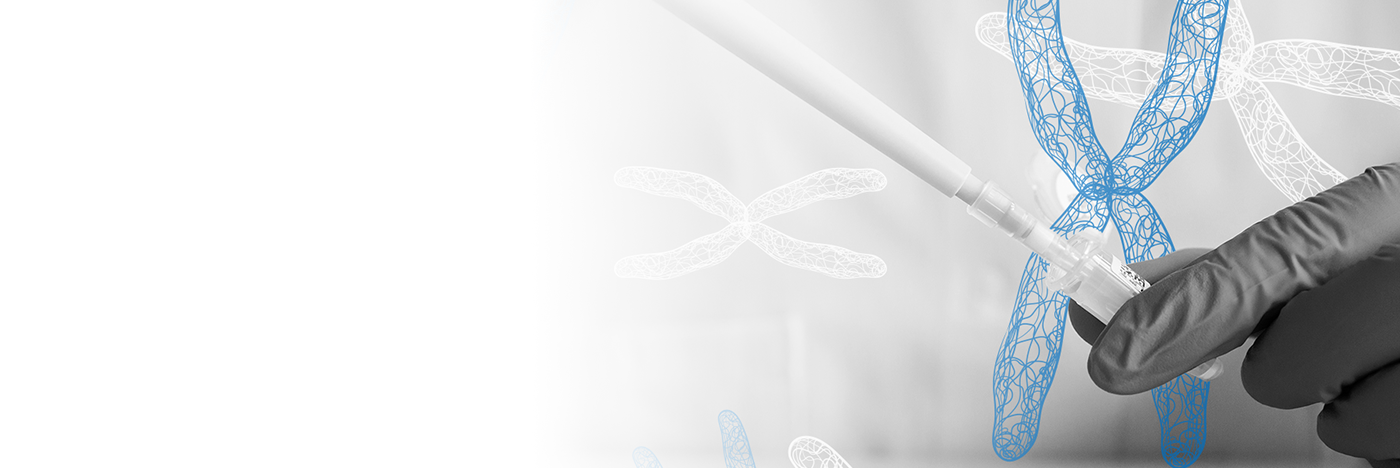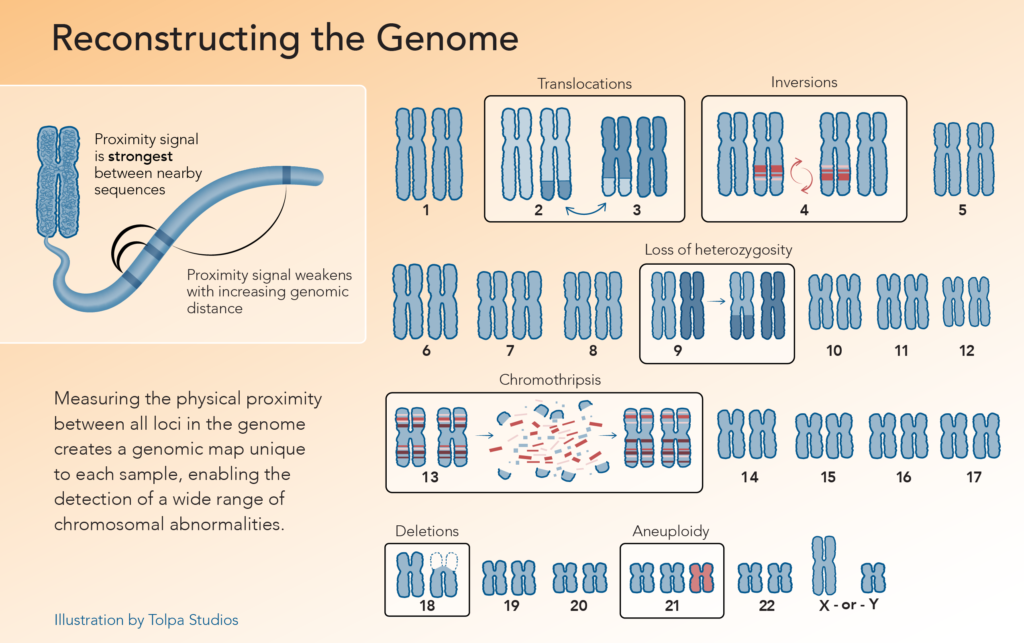
Genomic Proximity MappingTM (GPM)
Chromatin capture meets computational genomics
Proximity ligation for next-generation cytogenetics
Genomic Proximity Mapping™ (GPM) utilizes the molecular mechanisms of high-throughput chromosome conformation capture (Hi-C) and the computational power of AI to comprehensively survey the genomic landscape from a wide variety of biological samples.
Hi-C employs cost-effective, short-read sequencing to identify the interactions between genomic loci that are co-located in three-dimensional space, but may be separated by significant distances in the linear genome. This powerful methodology (also known as proximity ligation or ultra-long-range sequencing) is now being applied to revolutionize cytogenetics.
Our proprietary CytoTerra® analytics platform converts the genomic proximity information to construct a complete map of the chromosomes in a cell, thereby enabling the identification and characterization of all major types of chromosomal aberrations associated with genetic disease or cancer.

Proximity ligation is used to trap short-, long-, and ultra-long-range intracellular DNA contacts (black arcs) from tissue, blood, or other sample types. Chimeric junctions originating from the same cell are recovered, converted into a short-read sequencing library, and subjected to paired-end sequencing. The proximity ligation signal increases as the genomic distance between any two loci across the genome decreases. AI-driven CytoTerra software extrapolates this unique information with a high degree of confidence, enabling the genome-wide detection of all major types of chromosomal abnormalities.
Reconstructing the genome using GPM
Chimeric junctions between adjacent sequences encode quantitative, long-range information

